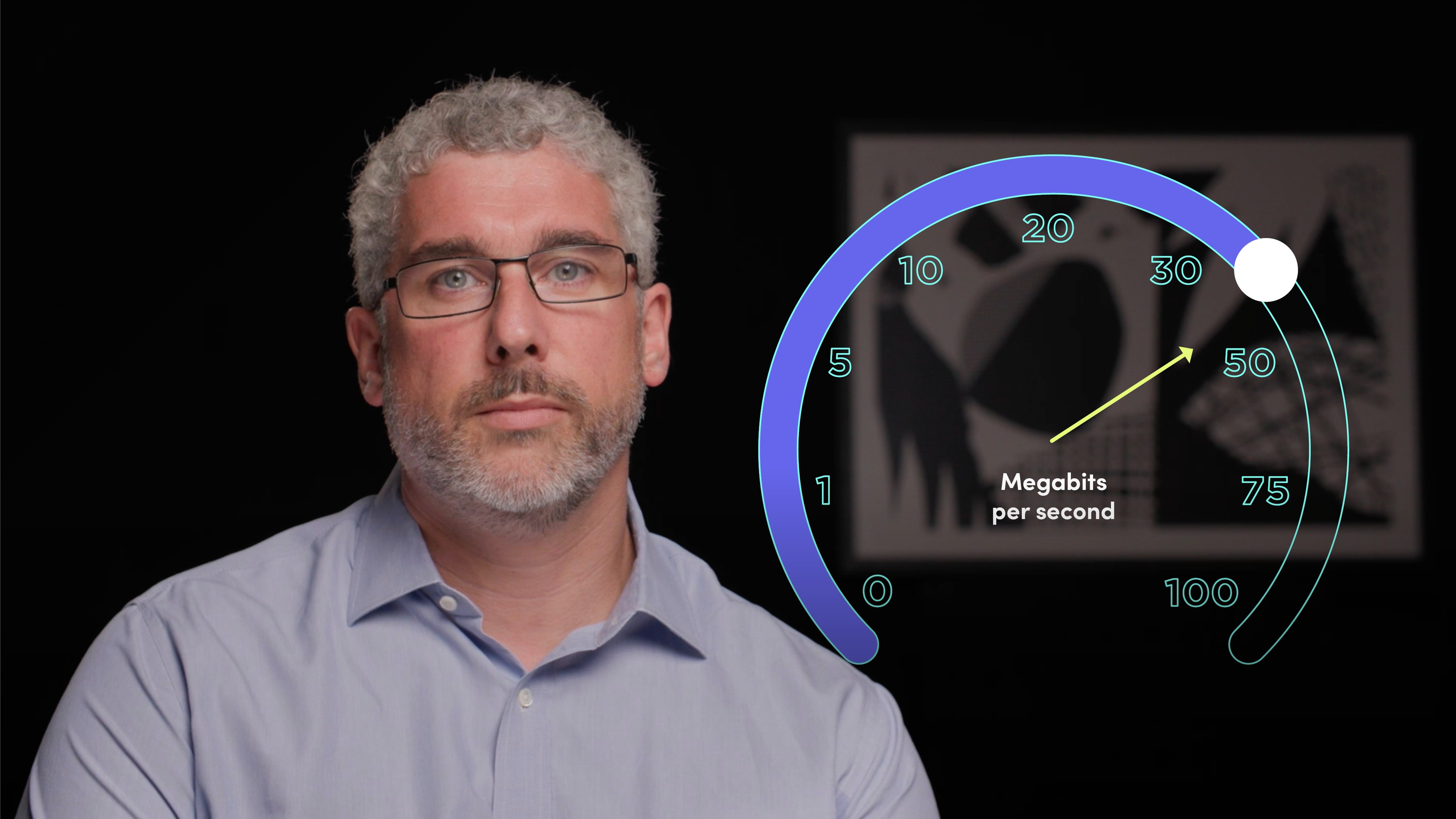
Introduction to Networks

Ciaran Rooney
20 years: technology, cybersecurity & operations
When you think of networking, you might think of the familiar buzzing of a dial-up modem or the mess of cables attached to your internet router. But it’s slightly more complicated and interesting than that. Join Ciaran Rooney as he breaks down networks and networking.
When you think of networking, you might think of the familiar buzzing of a dial-up modem or the mess of cables attached to your internet router. But it’s slightly more complicated and interesting than that. Join Ciaran Rooney as he breaks down networks and networking.
Subscribe to watch
Access this and all of the content on our platform by signing up for a 7-day free trial.

Introduction to Networks
19 mins 27 secs
Key learning objectives:
Define networks and networking
Understand how ISPs work
Outline the OSI model
Overview:
Networking is a set of rules and standards, commonly known as protocols, which facilitate two or more devices communicating with each other. A network is simply two or more connected (or networked) computers linked to share resources, exchange files, or allow electronic communications. Networks are operated by Internet Service Providers or ISPs. There are 3 Tiers of ISPs. Home and work networks will connect to Tier 3 ISPs that provide internet services for individuals and companies. The level above this consists of Tier 2 ISPs, which provide their service typically over a whole country. At the top level is Tier 1 ISPs, currently a group of 15 companies that own major international networks, like undersea fibre optic cables, networks run by NSPs and significant internet exchanges. There are seven layers of networking called the OSI model, with each layer handling a specific job and communicating with the layers above and below itself.
Subscribe to watch
Access this and all of the content on our platform by signing up for a 7-day free trial.
What is a network?
A network is two or more connected computers linked to share resources, exchange files, or allow electronic communications.
What is networking?
Networking is a set of rules and standards (commonly known as protocols) which facilitate two or more devices communicating with each other.
What are the 3 Tiers of internet service providers (ISPs)?
Tier 3: Home and work networks will connect to Tier 3 ISPs that provide internet services for individuals and companies. These usually offer network connections to a network over a large area, such as a city, called Metropolitan Area Network (MAN).
Tier 2: The level above this consists of Tier 2 ISPs, which provide their service typically over a whole country, called a Wide Area Network (WAN). These larger companies are generally called National Service Providers or NSPs. They form a vital part of the backbone of the internet, owning the physical equipment such as towers, cables and exchanges that run the WANs.
Tier 1: At the top is Tier 1 ISPs, currently a group of 15 companies that form the backbone of the internet. They own major international networks, like undersea fibre optic cables, networks run by NSPs and significant internet exchanges. To be considered a Tier 1 ISPs, you must peer with every other Tier 1 ISP. As all Tier 1 ISPs peer with each other, they do not charge each other for data transmitted between them.
What is the OSI model?
The Open Systems Interconnection reference model (OSI model) provided a standard for different computer systems to communicate. It was based on splitting communication into seven abstract layers, each stacked upon the last and otherwise known as the seven-layer model.
Layer 7 is the application layer. This is the layer where we interact with our computers to perform actions such as browsing the web and sending emails.
Layer 6 is the presentation layer. In this layer, data is converted and encoded from formats used by the application on our computer to ones used for sending and receiving it.
Layer 5 is the session layer. This layer opens and closes connections between computers, with the time between opening and closing being known as the session.
Layer 4 is the transport layer. This lay=er enables the actual transmission of data between computers. It is responsible for determining the flow and speed of communication and error control.
Layer 3 is the network layer. This layer is responsible for transferring data between computers on two different networks. It determines the best physical route for data to reach its destination.
Layer 2 is the data link layer. This layer is similar to layer three, except it is responsible for transferring data between computers on the same network.
Layer 1 is the physical layer. The layer responsible for the actual physical data transfer via cables and switches via an agreed-on signal convention.
Subscribe to watch
Access this and all of the content on our platform by signing up for a 7-day free trial.

Ciaran Rooney
There are no available Videos from "Ciaran Rooney"



























